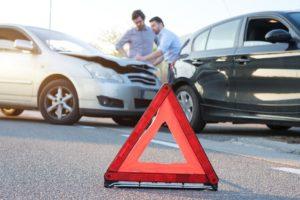
The National Highway Traffic Safety Administration (NHTSA) has been testing the crashworthiness of vehicles for nearly four decades. In all these tests, the NHTSA places crash test dummies in front seats to assess how well the car handles a crash. While the information from these tests has led to significant innovations, it leaves one area largely unchanged: the backseat. To improve safety features for rear passengers, the NHTSA will begin conducting crash tests with backseat crash test dummies.
The Call for Backseat Safety
Ever since the NHTSA started its five-star safety rating system for vehicles in 1978, crash testing has focused on the safety of the driver and front-seat passenger. However, with more passengers riding in back seats thanks to ride-share services like Uber and Lyft, backseat passenger safety is a growing concern.
Child safety seats are a major point of interest when looking at backseat safety. Changes to front seat designs to improve front passenger safety have inadvertently led to more danger for children seated behind occupied front seats.
The backseat dummies will be able to point out how manufacturers can improve safety in future car models.
For a free legal consultation, call (614) 538-1116
How Backseat Dummies Will Shape the Future of Backseat Safety
Crash test dummies share a wealth of information about how different sized human bodies will react in a collision. Dummies are weighted and jointed to move and respond like humans, and some even have sensors to detect velocity and impact strength.
The best current safety feature for backseats is the seat belt, but even these are inferior in some vehicles. Not all backseat seat belts feature pre-tensioners that hold an occupant in place when a crash is imminent. Other front-seat safety features like side-impact airbags are non-existent in standard backseat safety plans.
The NHTSA is in the rulemaking process of improving its rating system for backseat safety. The administration hopes to have guidelines set by the end of the year and roll out the new rating system by the model-year 2019 vehicles.
Tips for Improving Backseat Safety
Backseat occupants should always wear their seatbelts no matter how far the trip or how fast the vehicle. The Center for Auto Safety is currently raising awareness of the dangers of front-seat collapse and the risk to children sitting behind an occupied seat, however, until manufacturers fix these seats, child safety seats should only ever be behind an empty seat or space whenever possible.
Parents should remind their children about sitting up straight and facing forward when seated in the backseat, as the seatbelt is best designed to help in that position. State Farm also suggests seating backseat passengers in the middle seat, as that position is the furthest from impact zones.
While the NHTSA is attempting to make cars safer, we are far away from the perfect vehicle. If you or a loved one was injured while riding in the backseat of another person’s car, you may be eligible to recover compensation.
Contact Bressman Law to schedule a FREE consultation regarding your rights to file an injury claim: (614) 538-1116.
Call or text (614) 538-1116 or complete a Free Case Evaluation form








